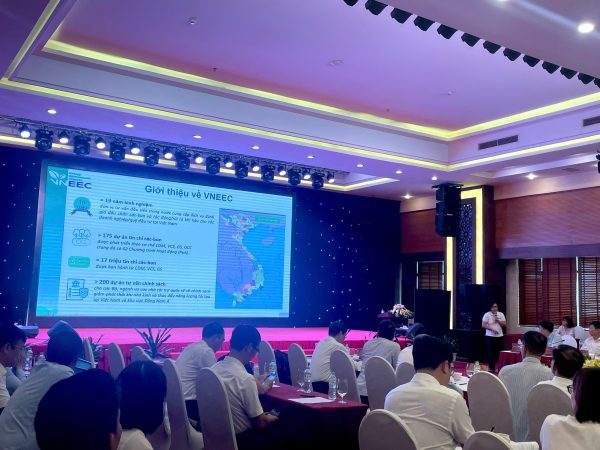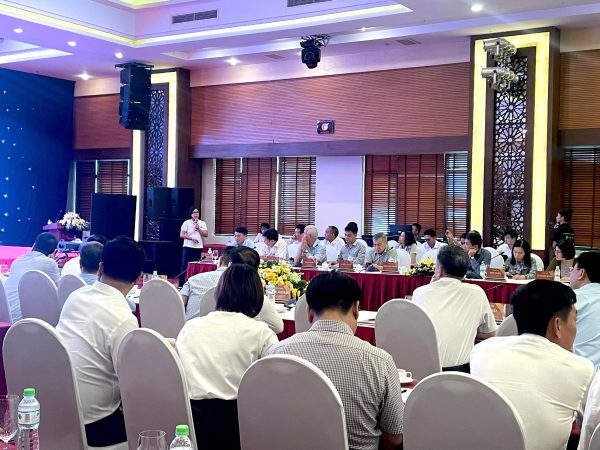On August 22, Ms. Dang Hong Hanh, Co-founder and CEO of the Energy and Environment Consulting Joint Stock Company (VNEEC), participated in the 2025 Environment Conference organized by the Vietnam Cement Industry Corporation (VICEM). The conference focused on Greenhouse gas (GHG) inventory, allowance allocation, and participation in the domestic carbon market.”
At the conference, Ms. Hanh presented a specialized report titled: “Allowance allocation in the Emissions Trading System (ETS): Regulations and technical issues,” with a particular focus on the cement industry – one of three key sectors included in the pilot roadmap from 2025 under Decree 119/2025/ND-CP.
In her presentation, the VNEEC representative introduced the legal framework and GHG inventory roadmap, while analyzing the principles of allowance allocation, which are determined based on average production, sectoral emission factors, and adjustment coefficients reflecting growth targets (g) and emission reduction targets (r). She also clarified the compliance options available to enterprises, including implementing mitigation measures, surrendering allowances on a regular basis, borrowing up to 15% of allowances from the next compliance period, or offsetting up to 30% of emissions with carbon credits.
Notably, Ms. Hanh highlighted that the cement industry has lower abatement costs compared to power generation and steel, giving it strong potential to become a major supplier of allowances in the domestic carbon market. This represents a strategic advantage, enabling cement companies not only to meet emission reduction obligations but also to generate additional revenue through trading surplus allowances.

Photo: Ms. Dang Hong Hanh – Co-founder and Managing Director of VNEEC, delivering a presentation at the Conference.
At the same time, Ms. Hanh pointed out that GHG inventory and reporting remain limited at many cement facilities, undermining the accuracy of allowance allocation. Data on production and fuel is often incomplete or inconsistently recorded, with discrepancies observed across different reports. To address this, she recommends that enterprises proactively develop a carbon asset management strategy, standardize GHG inventory processes, and actively participate in policy consultations. For VICEM, it is essential to strengthen its role as a coordinator, guiding member companies to improve the quality of MRV, thereby ensuring transparent, accurate, and equitable allowance allocation.

Photo: General view of the Conference.
The 2025 Environment Conference served as a key forum for the cement industry to obtain timely insights into regulatory requirements, allowance allocation mechanisms, and strategies for carbon market participation. With VNEEC’s support, enterprises were able not only to update their technical knowledge but also to identify practical pathways for fulfilling emission obligations and strengthening competitiveness as Vietnam advances its domestic carbon market.
1,458 views, 4

Tags:
Bài viết liên quan